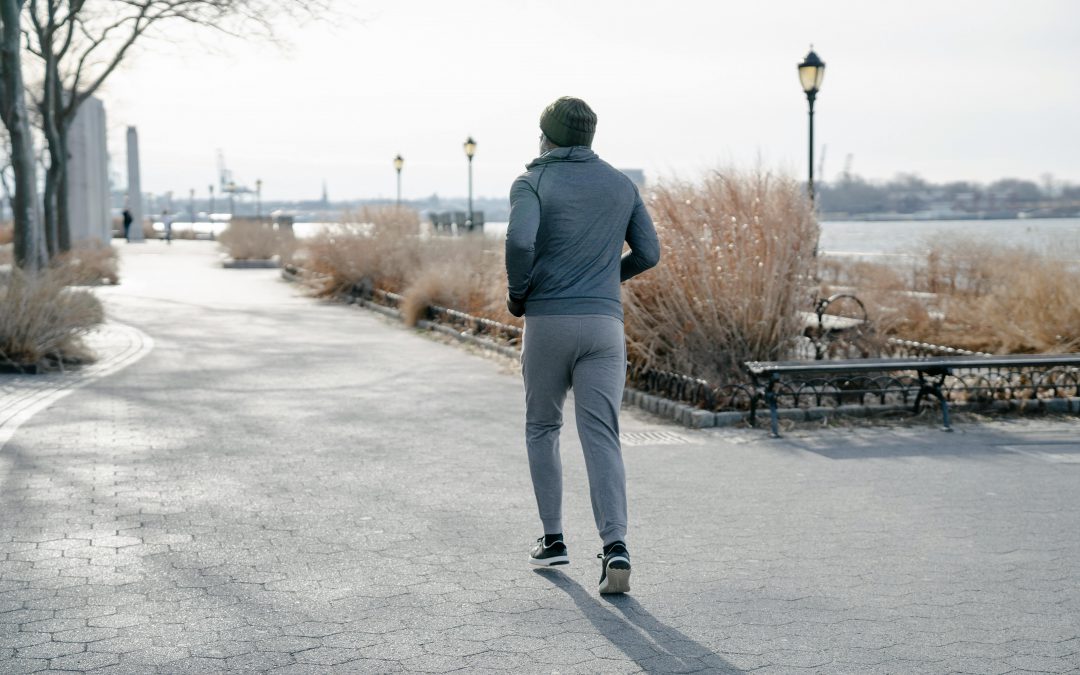Why is it more difficult to stay fit in winter?
Winter months make it more difficult to stick to healthy habits that keep you fit and well. In summer, there are more daylight hours to get outside, making it easier to exercise, walk, and stay active. Seasonal summer foods are light and nutritious, and we often crave fresher meals when it’s warm.
When the weather turns cold, we often see a drop in physical activity because it’s harder to get outside (and less safe to do so). You need an extra dose of motivation to exercise in winter, and you’re also more likely to crave larger meals. Not to mention the influx of festive foods tempting you from every shop, TV advertisement or social occasion! Indulgent eating and increased alcohol intake can result in weight gain, impacting your confidence and motivation to exercise.
Then there’s the reduced daylight hours which can affect your sleep, mood, and energy levels, sometimes leading to Seasonal Affective Disorder (SAD). Cold and damp air can exacerbate respiratory problems and increase your risk of colds and other viruses.
All of this doom and gloom means we need to be more proactive with our health and fitness during the winter. Let’s take look at how to plan, habit-stack, and stay motivated!
Why your health and fitness routine needs to change in winter
As winter sets in, it’s a good idea to change your fitness routine (even if you’re a firm fan of the indoor gym). Acknowledging changes in daylight hours, the weather, and your body’s natural patterns will help you stay on track.
If you’re an outdoor exerciser:
- Change your training times so you can exercise in daylight hours
- Keep an eye on the weather to avoid storms, ice, and snow
- Invest in safety items like lights or reflective gear
- Stay comfortable by adding base layers and gloves
- Consider swapping some of your usual outdoor sessions for indoor training (strength or performance-focused)
If you’re an indoor exerciser:
- Train whenever you feel most energised
- Use the gym treadmill to keep daily step count high
- Try out different training styles or exercise classes
- Consider adding swimming or sports to your routine
Mental health benefits of staying active during winter
Being active throughout winter can reduce symptoms of Seasonal Affective Disorder (SAD), a type of depression triggered by a lack of sunlight. By adding more exercise into your routine, you’re likely to experience improved sleep quality, reduced stress levels, and a general uplift in mental resilience, so you can get through winter with a more positive outlook.
Can you use fitness to stay warm in winter?
Exercising throughout winter doesn’t just boost your fitness, burn calories, and keep you healthy. It can help your body stay warm. All types of exercise can help ward off the cold, but the best types are cardio workouts (brisk walking, jogging, running, or cycling) and strength training (including bodyweight circuits, gym machines, and lifting free weights). Just remember to wear plenty of layers for outdoor workouts and cardio, because your body temperature will drop quickly once you stop exercising.
How to get enough Vitamin D in winter
One of the biggest health problems in the winter months is Vitamin D deficiency. Our bodies make Vitamin D when we get enough sunlight on our skin, but it’s almost impossible in winter months. The health risks of Vitamin D deficiency include a reduction in bone density (including osteoporosis), weakened immune strength, and mood disorders.
3 ways to get enough Vitamin D
- From sunlight – exposing the skin to natural light (very difficult in winter months due to short daylight hours and weak sunlight)
- From food – oily fish (salmon, mackerel), liver, egg yolks, fortified cereals, and dairy products.
- From supplements – daily Vitamin D supplementation is a cost-effective and healthy addition to your routine between October and March.
Indoor vs. outdoors workouts in winter
Winter can be a great time to shake up your exercise routine or start something new. Here’s what to consider when thinking about whether to walk, run, gym, or join exercise class.
The benefits of indoor exercise like gym sessions, group exercise classes, indoor cycling classes, pool swimming, yoga, Pilates, and sports centre sessions include:
- Controlled temperature and environment
- Comfortable and predictable surroundings
- Safety benefits of lights and other people
- Access to a variety of fitness equipment
- Minimal weather interruptions
The benefits of outdoor exercise like walking, running, cycling, team sports, outdoor bootcamp classes:
- Exposure to fresh air and nature
- The opportunity to explore new sports
- The activities can be free or low-cost
5 ways to stay fit and healthy in winter
- Nutrition – focus on plenty of seasonal fruit and veg, plus protein and wholegrains. Be mindful about festive indulgence and alcohol. Find go-to healthy recipes you’ll enjoy cooking.
- Hydration – keep up your fluid intake even if you don’t feel thirsty. Aim for 2+ litres a day of water, sugar free squash, or herbal teas.
- Set fitness goals – use the winter months to set new fitness goals for 1 month, 3 months, and 6 months to keep you motivated.
- Join group activities – consider joining a local sports team, regular fitness class, or community running group for safety, accountability, and social interaction.
- Embrace rest – the winter months are designed for rest and growth, so listen to your body and do plenty of restful activities including walking, stretching, and extra sleep!
Has your employer reviewed their fitness benefits recently? Get discounted access to our network of fitness venues as an employee benefit- refer your HR team.



